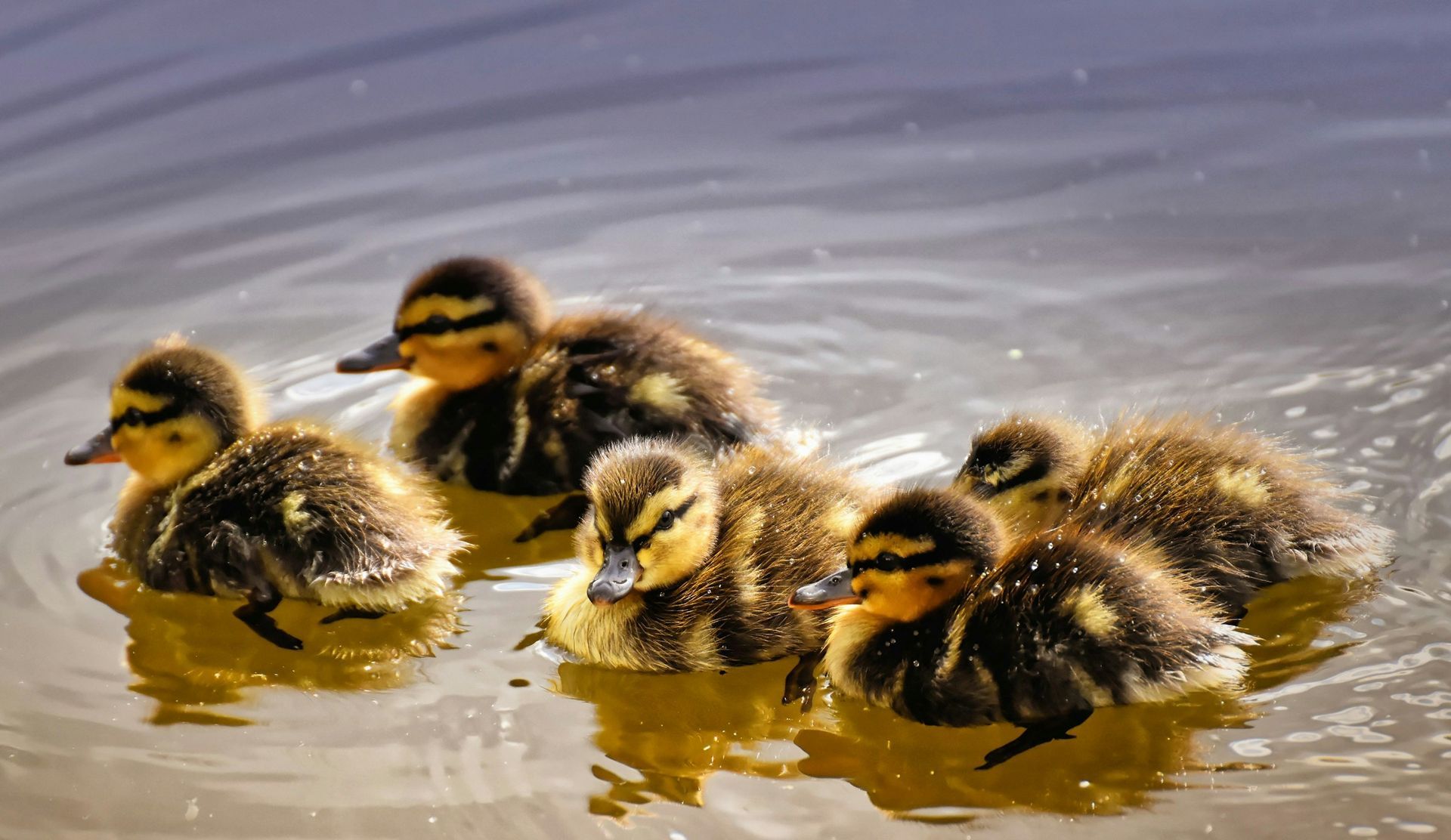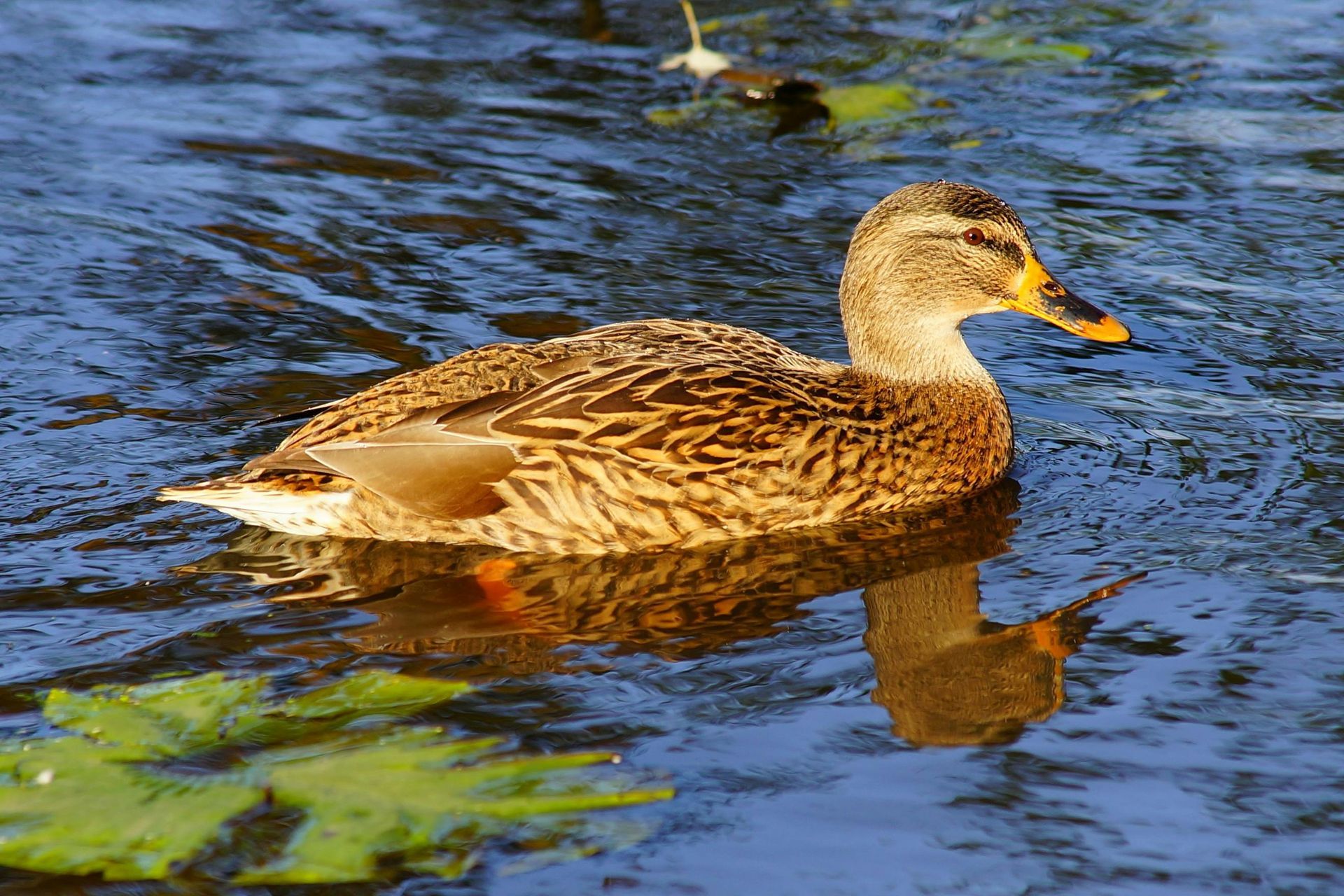Ducks are versatile waterfowl found in freshwater and coastal habitats around the world. Known for their adaptability, they thrive in ponds, rivers, lakes, marshes, and even urban parks. Ducks play a critical role in aquatic ecosystems by dispersing seeds, controlling insect populations, and cycling nutrients through wetlands.
Ducks come in a wide range of sizes and colors, depending on the species. Mallards, one of the most common species in North America, have a distinctive green head (in males) and are often the source of domesticated breeds. Most ducks have a broad, flat bill for filtering food from water and webbed feet for efficient swimming. They feed on aquatic plants, insects, small fish, and grains.
These birds are highly social and can be found in pairs or large flocks. Breeding typically occurs in spring, with females building nests near water and laying clutches of 6-12 eggs. Ducklings are precocial, meaning they are able to walk and swim shortly after hatching, following their mother closely for protection and guidance.
Ducks face various predators, including foxes, raccoons, hawks, and snapping turtles. Human-related threats, such as habitat destruction and pollution, also impact their populations. Despite these challenges, many duck species have adapted well to urban environments, where they find abundant food and nesting opportunities.

HPAI disclaimer.
Found An Animal? Not sure how to help a wild animal in need? Learn when to step in, who to call, and how to help safely.
Did You Know?
- Ducks have three eyelids, with the third being a transparent membrane that helps protect their eyes underwater.
- The coloration of male ducks changes after the breeding season in a process called eclipse plumage.
- Some species of ducks, like the northern shoveler, have specialized bills designed for filtering tiny aquatic organisms.
- Ducks’ feet have no nerves or blood vessels, which prevents them from feeling cold in icy water.
- Certain species, such as the harlequin duck, prefer fast-moving streams rather than calm ponds or lakes.
- Ducks communicate through a variety of vocalizations, from quacks to whistles and grunts, depending on the species.
- They can sleep with half their brain active, allowing them to remain alert for predators.
- Ducks molt all their flight feathers at once, rendering them temporarily flightless.
- Unlike many birds, some ducks have been known to form creches, where multiple females care for ducklings together.
Problems Faced In The Wild
- Habitat Loss: Wetland drainage and urban development reduce critical nesting and feeding areas.
- Pollution: Contaminants in water can affect health and reduce food availability.
- Climate Change: Shifts in temperature and precipitation patterns impact migration and breeding.
- Fishing Gear Entanglement: Discarded fishing lines and nets pose a significant threat.
- Human Disturbance: Feeding and close interactions can lead to habituation and health problems.
- Predation: Eggs and young ducks are vulnerable to predators such as raccoons and snapping turtles.
Tips For Cohabitation
- Preserve Wetlands: Support conservation efforts that protect natural water sources.
- Avoid Feeding Ducks: Bread and other human foods can harm their health and disrupt natural behaviors. Fun fact: many ducks, like Mallards, love to eat snails!
- Properly Dispose of Fishing Gear: Prevent entanglement and injury by keeping waterways clean.
- Use Native Plants for Landscaping: Encourage natural foraging and nesting habitats.
- Provide Nesting Boxes: In appropriate areas, these can help ducks find safe nesting sites.
- Educate the Community: Promote awareness about the importance of ducks in local ecosystems.



